* Editor's Note: According to the Korea Foundation's 2024 report, there are nearly 225 million Hallyu (Korean Wave) fans worldwide. With the advent of the "Digital Silk Road," transcending time and space, we are entering the era of "Hallyu 4.0." To help readers gain a fresh perspective on Korean culture and K-culture, the Yonhap News K-Culture Team has prepared a series of expert columns.
Shin Jong-geun's 'K-Liqueur' Story: Pine Tree Liquor and Intangible Cultural Heritage
Contributed by Shin Jong-geun, exhibition planner and columnist (author of "Art and Liquor")
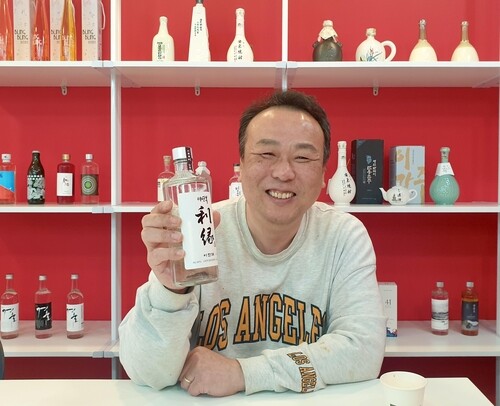
Among all the trees in Korea, the pine tree boasts the widest distribution and the greatest number of individual trees, making it a representative symbol of the nation.
The pine tree is one of the ten symbols of longevity (Sipjangsaeng) and is regarded as a symbol of integrity and loyalty. Even in the harshest winter weather—amidst wind, snow, and freezing temperatures—the pine tree remains evergreen. Our ancestors therefore considered it an emblem of steadfastness and moral strength.
 |
| ▲ Pine Tree Growing on a Cliff (Yonhap) |
For these reasons, the pine tree became a powerful symbol representing Korean sentiment and temperament across various aspects of life, including food, clothing, shelter, religious practices, painting, literature, and folklore.
Our ancestors used the pine tree as a key ingredient in brewing various types of pine liquors. The main ingredients included pine flowers (Songhwa), pine shoots (Songsun), resin-filled knots (Gwansol), and pine joints (Songjeol).
Songhwa refers not to the actual pine flowers but to the pollen they produce. Songsun are the new shoots of the pine tree, and Gwansol indicates branches or knots filled with hardened resin. Songjeol refers to the joints of fresh pine branches, while Songyeop are pine needles, which today even feature prominently in the soft drink market. Songgeun refers to the roots of the pine tree.
In modern times, the varieties of pine liquor have expanded beyond distilled spirits and medicinal wines to even include makgeolli (a traditional Korean rice wine) made with pine ingredients. It is quite astonishing that pine liquor has been designated as an intangible cultural heritage.
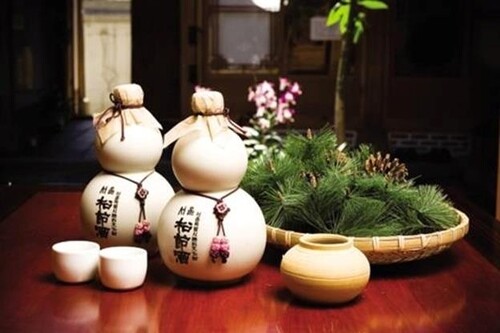 |
| ▲ Songjeolju (pine-knot liquor), website screenshot (PHOTO NOT FOR SALE) (Yonhap) |
Designated as Seoul City Intangible Cultural Heritage No. 2, Songjeolju is brewed with pine joints (Songjeol), glutinous millet (Jindeukchal), Danggui (angelica root), azalea flowers (or chrysanthemum in spring and fall), and pine needles. The liquor has been featured in historic texts such as Imwon Sipnyukji and Gyuhap Chongseo, indicating it was brewed as early as the 16th century during the mid-Joseon period.
The tradition of brewing Songjeolju was upheld by Madam Heo Seong-san (1892–1967), the wife of Lee Pil-seung, the 14th-generation descendant of General Lee Jeong-ran (title: Chung Gyeong-gong) during the reign of King Seonjo. The technique was later passed down to her daughter-in-law, Park Ah-ji, and is currently inherited by Lee Seong-ja, who is officially recognized as the holder of this cultural heritage. Her own daughter-in-law, Park Min-jeong, has been designated as the next successor.
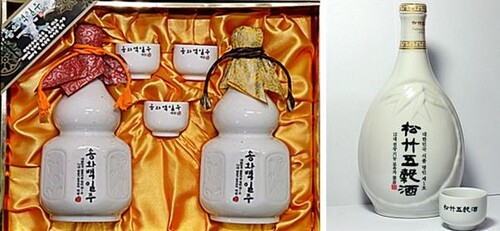 |
| ▲ Hamyang’s Solsongju and Damsol, website screenshot (PHOTO NOT FOR SALE) (Yonhap) |
Songhwa Baekilju, designated as Intangible Cultural Property No. 6-4 of North Jeolla Province, is preserved and passed down by Monk Byeogam (legal name: Jo Young-gwi), head monk of Suwangsa Temple in Wanju, North Jeolla, and the first recipient of Korea’s "Master of Food" honor. As the 12th-generation inheritor of this tradition, he brews the temple liquor by steeping pine pollen and pine needles.
Other ingredients include cornus fruit, goji berries, chrysanthemum, angelica root, hasuo (polygonum multiflorum), and licorice. True to the temple’s name, which means "king of water," the liquor is made using mineral water that flows from crevices in cliff rocks on the temple grounds. Glutinous rice, non-glutinous rice, and traditional fermentation starters (nuruk) are mixed and aged for 100 days.
According to historical records, around 1,300 years ago during the reign of Queen Jindeok of Silla, lay monk Buseol shared a pine pollen liquor (Songhwa Gokcha) with fellow practitioners Yeonghui and Yeongjo before they parted ways, as a way to comfort their longing for each other. Many scholars believe this marks the origin of Songhwa Baekilju, a tradition passed down exclusively through generations of Suwangsa head monks.
In 1992, Monk Byeogam established Songhwa Brewing near Suwangsa Temple to preserve, pass on, and research the traditional method of making Songhwa Baekilju, and to train future generations. Today, they produce a 38-proof Songhwa Baekilju liqueur and a 16-proof Songjuk Ogokju medicinal wine. However, due to the limited quantity of available pine pollen and needles, only about 2,000 bottles are produced annually.
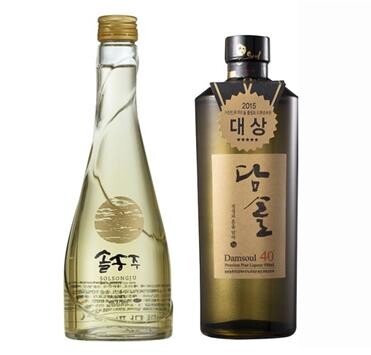 |
| ▲ Hamyang Songsunju and Damsol (PHOTO NOT FOR SALE) (Yonhap) |
Hamyang Songsunju is a traditional liquor more commonly known by the name Solsongju. However, it is registered as Songsunju on the Korea Heritage Service’s National Cultural Heritage Portal, so it will be referred to as Songsunju for convenience.
Hamyang Songsunju is designated as Gyeongnam Intangible Cultural Property No. 35 (holder: Park Hong-seon) and is a historically significant premium liquor, even mentioned in the Annals of the Joseon Dynasty.
It is a traditional home-brewed liquor that has been handed down for 530 years within the Hadong Jeong clan, descended from the Joseon scholar-official Jeong Yeo-chang (pen name: Ildu), one of the five sages of the Joseon Dynasty. The current holder, Park Heung-seon, is the wife of Jeong Cheon-sang, the 16th-generation descendant of Jeong Yeo-chang, and has been designated as Korea’s Master of Traditional Food No. 27.
Solsongju, classified as a medicinal liquor under Korean liquor law, is brewed with rice and nuruk (traditional fermentation starter), with the addition of pine shoots (Songsun) and pine needles. These ingredients are harvested annually in mid-April to early May from the mountains near the ancestral grave site of the clan. The water used in brewing is sourced from the pristine springs of Mount Jirisan.
Currently, the Jeong family produces two types of liquor: Solsongju, a 13% fermented medicinal wine, and Damsol, a 40% distilled spirit made from Solsongju.
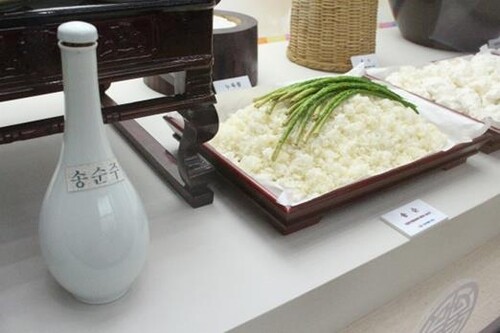 |
| ▲ Daejeon’s Songsunju, provided by Daejeon Cultural Foundation (PHOTO NOT FOR SALE) (Yonhap) |
There are also variants of Songsunju in Daejeon and Gimje. In Daejeon, Intangible Cultural Property No. 9, Master Brewer Yoon Ja-deok produces Songsunju made from pine. The Daejeon Songsunju has a 400-year tradition. Yoon, originally from Seocheon in South Chungcheong, married into the household of Song Byeong-ha (1642–1697), the 12th-generation eldest son of the Eunjin Song clan, thus beginning her connection with Songsunju.
Her family preserved handwritten recipe books titled Jusiksiui ("Rituals for Food and Drink") and Ueumjebang ("Various Recipes for Drinking"), which contain methods for making Songsunju and other traditional home liquors. As the eldest daughter-in-law, Yoon learned the recipes and the proper rituals of the household from her mother-in-law. The Daejeon Songsunju is brewed as a fermented liquor.
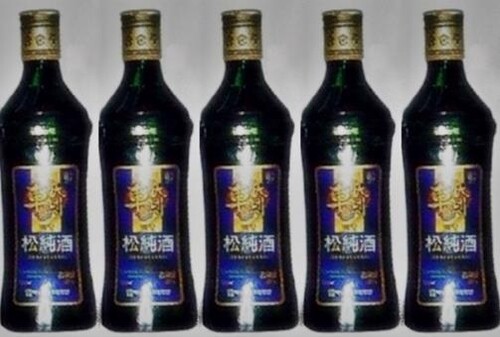 |
| ▲ Gimje’s Songsunju, website screenshot. (PHOTO NOT FOR SALE) (Yonhap) |
The Songsunju of Gimje is also designated as a North Jeolla Intangible Cultural Property (No. 6, holder: Kim Bok-soon). The Gimje Songsunju is a mixed liquor made by adding soju distilled from a base brew to a secondary brew made with pine shoots.
According to oral tradition in the Gyeongju Kim clan, during the reign of King Seonjo, Kim Tak, a government official who suffered from stomach ailments and neuralgia, was visited by a Buddhist monk who shared a secret remedy with his wife. Following the monk’s recipe, she brewed Songsunju using pine shoots and used it as a medicinal liquor, curing her husband’s ailments. Since then, the liquor has been passed down within the Gyeongju Kim family as their traditional home brew.
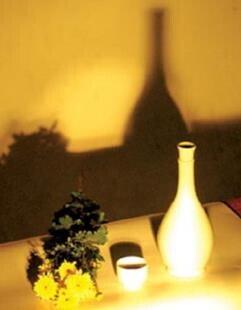 |
| ▲ Andong’s Songhwaju, website screenshot. (PHOTO NOT FOR SALE) (Yonhap) |
In Andong, North Gyeongsang Province, Songhwaju is designated as Intangible Cultural Property No. 20 (holder: Kim Young-han). Andong Songhwaju has been handed down for over 200 years in the household of Ryu Chi-myeong (1777–1861), a leading figure of the Toegye School from the Jeonju Ryu clan. It is used for ancestral rites and entertaining guests. The tradition is maintained by the Jeongjae Jongtaek, the main house of the Ryu clan in Andong. The liquor is brewed in late autumn using pine needles, yellow chrysanthemums, honeysuckle flowers (Geumeunhwa), and winter jasmine (Indongcho).
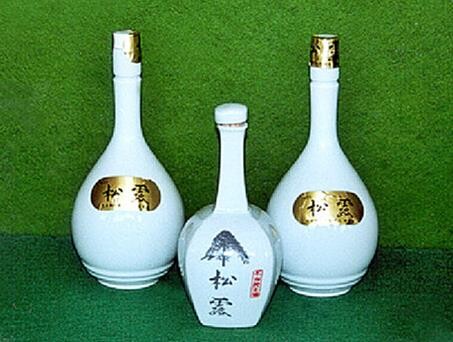 |
| ▲ Boeun’s Songroju (PHOTO NOT FOR SALE) (Yonhap) |
In Boeun, North Chungcheong Province, there is Songroju, designated as Intangible Cultural Property No. 3 (holder: Lim Kyung-soon). The main ingredients of Songroju are rice, resin-rich pine knots (Gwansol), and Poria cocos (Bokryeong), a fungus that grows on pine roots. It is a traditional distilled liquor made by fermenting steamed rice with nuruk, Gwansol, and Bokryeong, then distilling the mixture.
The method of brewing Songroju is found only in the Eumsikbeop ("Food Recipes") written in 1880 by Jeong Geum-i, the maternal grandmother of the previous holder, Shin Hyeong-cheol, and in a handwritten manuscript believed to date back to the 16th century.
This all shows how deeply our ancestors loved the pine tree, crafting a wide variety of liquors from it. These traditions continue today, with even more types of pine-based liquors being brewed and enjoyed. Beyond the liquor itself, we should also inherit the spirit of dignity, loyalty, and moral fortitude symbolized by the pine tree—an honorable tradition and cultural heritage of Korea.
(C) Yonhap News Agency. All Rights Reserved























